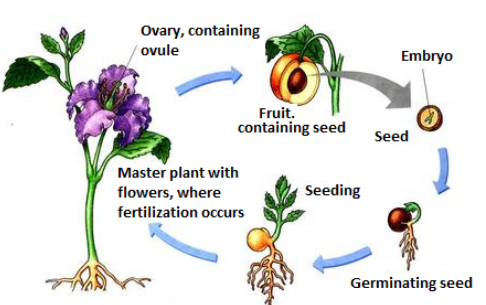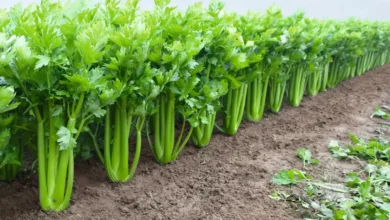How Flowers and Fruits Drive Plant Reproduction

Plant propagation is vital for life on Earth, enabling plants to colonize diverse environments. Though often appreciated for their aesthetics or taste, flowers and fruits are essential for the survival and spread of plant species. Understanding their roles in propagation reveals the elegant mechanisms that have allowed plants to thrive.
The Essential Function of Flowers in Plant Reproduction
Flowers are nature’s reproductive powerhouses, designed with one primary goal: bringing together male and female genetic material to create the next generation of plants. Every colorful petal, distinctive shape, and enticing fragrance serves this fundamental purpose.
The Anatomy of Sexual Reproduction
A flower’s structure reflects its reproductive mission. The male parts, called stamens, produce pollen grains containing sperm cells. The female parts, known as pistils, house the ovules that will become seeds once fertilized. This arrangement allows plants to engage in sexual reproduction, combining genetic material from two parents to create offspring with new combinations of traits.
The diversity of flower forms across plant species reflects different strategies for achieving successful reproduction. Some flowers are large and showy to attract pollinators from great distances, while others are small and inconspicuous, relying on wind or water to carry their pollen.
Pollination: The Critical First Step
Pollination marks the beginning of the reproductive process. This transfer of pollen from male to female flower parts can occur through various mechanisms, each adapted to specific environmental conditions and pollinator relationships.
Wind-pollinated plants produce vast quantities of lightweight pollen that can travel great distances through the air. Grasses, oak trees, and many agricultural crops rely on this method. These plants typically have small, unremarkable flowers since they don’t need to attract animal pollinators.
Animal-pollinated plants have evolved intricate relationships with their pollinators. Bees are drawn to bright colors and sweet nectar, butterflies prefer flat landing platforms, and hummingbirds seek out red, tubular flowers. Each pollinator relationship represents millions of years of evolutionary refinement.
From Pollination to Fertilization
Once pollen lands on a compatible flower’s stigma, it begins growing a tube down through the pistil toward the ovules. This pollen tube carries sperm cells to their destination, where fertilization occurs. The timing and conditions must be precisely right for this process to succeed.
Temperature, humidity, and the flower’s developmental stage all influence fertilization success. This is why many plants have evolved to bloom during specific seasons when conditions are most favorable for reproduction.
How Fruits Protect and Disperse Seeds
Fruits develop from fertilized flowers, transforming the flower’s ovary into a protective structure around the developing seeds. This transformation represents one of the most significant innovations in plant evolution, dramatically improving reproductive success rates.
Fruit Development and Structure
After fertilization, the flower undergoes remarkable changes. Petals typically fall away, while the ovary begins expanding and changing composition. The developing fruit provides protection for the maturing seeds while accumulating nutrients and developing features that will aid in dispersal.
Different plant families have evolved distinct fruit types, each optimized for specific dispersal strategies. Berries, nuts, pods, and capsules all represent different approaches to the same fundamental challenge: getting seeds away from the parent plant to reduce competition and colonize new areas.
Seed Protection Mechanisms
Fruits serve as sophisticated protective containers during the vulnerable seed development period. They shield developing seeds from physical damage, temperature fluctuations, and desiccation. Many fruits also contain chemical compounds that deter herbivores until seeds are mature and ready for dispersal.
The thickness of fruit walls, the presence of protective compounds, and the timing of fruit maturation all contribute to seed survival rates. Some fruits remain hard and unpalatable until seeds are fully mature, then suddenly become attractive to dispersers.
Dispersal Strategies and Mechanisms
Fruits have evolved numerous strategies for moving seeds away from parent plants. Fleshy fruits like berries attract animals that consume the fruit and later deposit seeds in new locations through their droppings. The seeds often pass through the digestive system unharmed, sometimes even benefiting from the scarification process that helps them germinate.
Wind-dispersed fruits develop wings, parachute-like structures, or other features that help them travel on air currents. Maple seeds spin like helicopters, dandelion seeds float on fluffy parachutes, and some fruits are so light they can travel hundreds of miles.
Water dispersal involves fruits that can float, allowing plants to colonize new areas along waterways. Coconuts represent the extreme of this strategy, capable of surviving ocean voyages and establishing new populations on distant shores.
Some fruits employ explosive dispersal, literally shooting seeds away from the parent plant when ripe. These ballistic fruits can propel seeds several meters, giving offspring a head start in establishing themselves.
Understanding Different Propagation Methods
Plant propagation encompasses both sexual and asexual reproduction methods, each with distinct advantages and applications in natural ecosystems and human cultivation.
Sexual Propagation Through Seeds
Seeds represent the product of sexual reproduction, containing genetic material from two parent plants. This genetic diversity provides populations with the flexibility to adapt to changing environmental conditions over time.
Sexual propagation through seeds is the primary method most plants use in nature. Seeds can remain dormant for extended periods, waiting for optimal conditions before germinating. This survival strategy helps ensure that at least some offspring will encounter favorable growing conditions.
For gardeners and farmers, starting plants from seeds offers several advantages. Seeds are typically less expensive than other propagation methods, and many varieties are only available as seeds. During a sale on seeds, cultivators can economically expand their plantings or experiment with new varieties.
Asexual Propagation Alternatives
While seeds are crucial for genetic diversity and long-distance dispersal, many plants also employ asexual propagation methods. These techniques produce offspring that are genetically identical to the parent plant, ensuring that successful adaptations are preserved exactly.
Vegetative propagation through runners, bulbs, tubers, and other structures allows plants to rapidly colonize suitable habitats. Strawberry plants send out runners that establish new plants nearby, while tulips produce bulb offsets that can be separated and grown independently.
Human cultivation has refined many asexual propagation techniques. Grafting allows growers to combine the beneficial characteristics of different plants, while taking cuttings provides a way to quickly multiply desirable varieties without waiting for seeds to mature.
The Broader Impact on Plant Diversity and Agriculture
The reproductive strategies involving flowers and fruits have profound implications for both natural ecosystems and human food production. Understanding these processes helps explain patterns of plant distribution, seasonal timing of agricultural activities, and conservation strategies for threatened species.
Natural plant communities depend on the intricate relationships between reproductive structures and their environment. Changes in pollinator populations can affect entire ecosystems, while climate change may disrupt the timing of flowering and fruiting cycles that many species depend upon.
Modern agriculture relies heavily on understanding and manipulating plant reproductive processes. Crop breeding programs work to develop varieties with improved fruit quality, disease resistance, and yield potential. Seed production requires careful attention to pollination, fertilization, and fruit development to ensure viable harvests.
The knowledge of how flowers and fruits function in propagation also guides conservation efforts. Protecting pollinators, maintaining genetic diversity in seed banks, and understanding dispersal patterns all contribute to preserving plant species for future generations.
Conclusion
The intricate relationship between flowers, fruits, and plant propagation represents millions of years of evolutionary refinement. These structures work together in a carefully orchestrated process that ensures plant species can reproduce, adapt, and spread across diverse environments.




